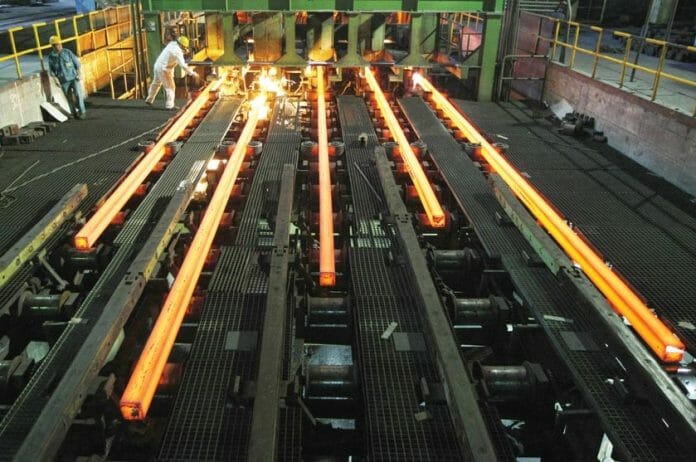The Institute for Democracy and Economic Affairs (IDEAS) released a policy report today, titled “Asserting Climate Change Leadership in ASEAN: Carbon Pricing for the Malaysian Steel Industry” where it explores the steel industry amid Malaysia’s transition to a low-carbon economy, given its growing contribution to the country’s greenhouse gas (GHG) emissions.
The report emphasises the need to adjust Malaysia’s industrial and environmental policies to ensure the steel sector supports the nation’s GHG emission reduction commitments.
Malaysia’s commitment to reducing GHG emissions, aligned with the 2015 Paris Agreement, targets net-zero emissions by 2050. Despite a decrease in emission intensity, absolute emissions have surged, necessitating measures to drive a trajectory towards the 2050 objective. Recent indications of a softened government stance raise concerns, compounded by the absence of climate change legislation and carbon pricing infrastructure.
The local steel industry currently faces overcapacity and trade challenges, driven by the construction of large-scale blast furnace steel mills. In the past decade, Malaysia’s increased production capacity has been mainly driven by Chinese investments, as China’s surplus capacity and declining demand prompt investments to shift toward ASEAN nations. This trend is fuelled by stricter environmental regulations and taxes in China, making ASEAN an attractive option. While these investments offer potential for employment and technology transfer, they also raise concerns about increased GHG emissions and potential drawbacks for local producers.
“Malaysia’s steel sector moved from a lower-than-average carbon intensity to higher than the world’s average. In other words, a ton of steel manufactured in Malaysia used to be greener than the average of the world, which is not true anymore. In contrast, leading economies are investing in low-carbon or zero-emissions steel production. Urgent policy adjustments are needed to align Malaysia’s steel industry with national emission reduction targets”, said Prof Dr Renato Lima, co-author of the report and Senior Fellow at IDEAS.
The absence of a carbon pricing framework and binding laws inhibits the government’s ability to address GHG emissions effectively. While carbon pricing is referenced in the Twelfth Malaysia Plan (12MP) 2021-2025, immediate implementation plans are lacking. The National Energy Transition Roadmap (NETR) and the New Industrial Master Plan (NIMP) 2030 outline policies aimed at reducing greenhouse gas emissions, but lack specifics on carbon pricing. Instead, temporary indirect control measures, such as a moratorium on new manufacturing capacity imposed by the Ministry of Investment, Trade and Industry (MITI) in 2023, have been introduced to mitigate emissions.
The urgent need to tackle rising GHG emissions from Malaysia’s steel industry calls for immediate policy actions. The study proposes policy recommendations in three key areas: Firstly, implementing carbon pricing measures to curb emissions growth to transition to a low-carbon steel sector. Failure to act could lead to overcapacity in production, hindering progress in other emission-intensive sectors.
There is also a need for coalition building to support and ease the implementation of a carbon pricing mechanism. While most steel producers support carbon pricing, downstream industries express concerns about potential inflationary impacts. To mitigate these concerns, revenue generated from carbon pricing could fund green steel initiatives or transition funds. Malaysia should consider a cap-and-trade scheme, coupled with measures to support renewable energy and local institutions. Implementing a Carbon Border Adjustment Mechanism (CBAM) could prevent carbon leakage to countries without carbon pricing.
The report proposes a timeline for the implementation of carbon pricing measures for the local steel industry such as a temporary tax on coking coal. These measures, including the development of regulatory infrastructure and carbon import taxes (MY-CBAM), may pose short-term challenges but will enhance competitiveness and align Malaysia with global emission reduction goals.
Addressing GHG emissions in Malaysia’s steel industry requires proactive measures with carbon pricing emerging as a crucial tool for emission mitigation and sustainability. Without intervention, emissions growth threatens Malaysia’s climate commitments and transition to a low-carbon economy. “By seizing this opportunity and taking decisive action, Malaysia can lead the way towards a greener steel industry, setting a precedent for sustainable development and inspiring regional efforts to combat climate change. It’s important that we use this opportunity to realign Malaysia’s industrial trajectory with global sustainability goals”, emphasised Dr Tricia Yeoh, CEO of IDEAS.









